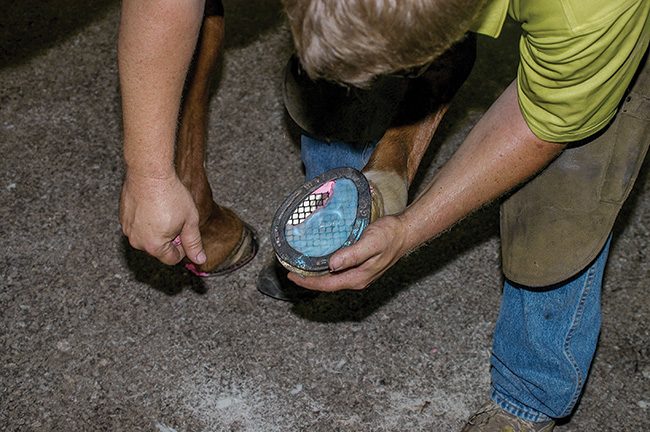American Farriers Journal
American Farriers Journal is the “hands-on” magazine for professional farriers, equine veterinarians and horse care product and service buyers.

Your first career therapeutic shoeing situation is likely to be a surprise. You’re called in to tack on a “lost shoe,” and discover that the shoe has taken a pretty big chunk of the hoof with it. Or you discover a horse doesn’t want to bear weight on a front foot. The owner — who is new to the horse world — can’t understand it. The horse seemed happy enough when it was chowing down on all that lush green grass in the pasture a few days earlier.
Welcome to the therapeutic world. What tool should you reach for first?
If you take the advice of some veteran farriers who have done a lot of therapeutic work, it may very likely be your cell phone — or whatever other method you use to contact a veterinarian, a mentor or a farrier you know who’s more experienced in dealing with such cases than you are.
“Good therapeutic farrier skills only really develop over a long time, like at least 10 to 20 years,” notes Steve Kraus, head of farriery services at Cornell University’s School of Veterinary Medicine. “You must be able to work out of your comfort zone, because even with lots of experience, new challenges arise constantly.”
Kraus isn’t the only one who feels that way. During a presentation at the International Hoof-Care Summit, Chris Gregory, owner of the Heartland Horseshoeing School in Lamar, Mo., expressed a similar sentiment.
“I try to discourage my students that just come…